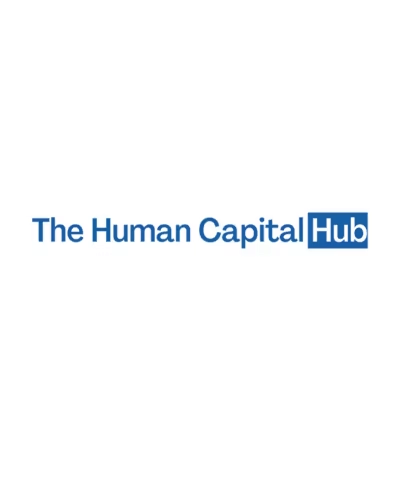You’ve probably heard it a thousand times already: "Generative AI is changing everything." But what does that even mean, really? Is it just another tech buzzword? Surprisingly, no. Generative AI—think tools like ChatGPT, DALL-E, or Midjourney—is genuinely reshaping how companies think about their teams. It’s not just about automating tasks. This technology creates new possibilities, redefines creativity, and—whether we’re ready for it or not—forces businesses to rethink their entire approach to workforce planning.
How Generative AI Is Shaking Up Job Descriptions (in Ways You Didn’t Expect)
Let’s be honest. Nobody grew up dreaming of becoming a "prompt engineer," right? Yet here we are. Job descriptions today aren’t just slightly shifting—they’re transforming in wild, unexpected directions. Marketing managers are becoming AI content curators. Designers? They’re working hand-in-hand with generative AI platforms, turning ideas into visuals in seconds flat. Even roles like copywriters and coders—jobs traditionally seen as "safe" creative havens—are getting a serious makeover.
But before you panic about robots stealing your job (cue the sci-fi movie soundtrack), take a deep breath. It’s not that simple.
Is AI Taking Jobs—or Creating New Ones?
Here’s a thought to chew on: whenever a technology disrupts the job market, panic sets in. Remember when ATMs were supposedly going to make bank tellers obsolete? They didn’t. Instead, teller roles evolved. Generative AI is doing something similar—reshaping rather than outright replacing.
Companies aren’t firing their designers or writers en masse. Instead, they’re finding ways to blend human talent with AI power. Take Superside, for example. This creative-as-a-service company seamlessly integrates generative AI into its workflows, helping creative teams produce visuals faster without sacrificing quality. It’s not about humans versus machines—it’s humans amplified by machines.
Skills You Didn't Think You'd Need (But Definitely Will)
You might be wondering, "So, what’s the new job market going to look like?" Good question. Generative AI doesn’t just hand you answers—it demands something different: intuition, strategy, the ability to ask good questions. Ironically, "soft skills" like critical thinking, emotional intelligence, and creativity—stuff humans have excelled at for thousands of years—are now more important than ever.
Who saw that coming, right?
Suddenly, being good at asking questions or guiding a conversation (with AI or colleagues, for that matter) is turning into a real superpower. And those human nuances—humor, empathy, and understanding context—remain firmly in our wheelhouse. AI might mimic creativity, but genuinely original insights? Still a human gig, for now at least.
How Businesses Are Adapting to the AI Revolution (Hint: It’s Messy)
You’d think businesses have a master plan by now. They don’t. Most companies are navigating generative AI’s impact like explorers in uncharted waters—lots of trial and error, a fair amount of chaos, and plenty of backtracking.
For every business diving headfirst into generative AI, there’s another cautiously dipping its toe. Some companies rewrite job roles overnight, while others take baby steps—running workshops, training employees, or simply experimenting quietly on smaller projects.
It’s messy. It’s confusing. But it’s also exciting.
Why Generative AI Won’t Replace Your Team (Yet)
Alright, real talk. Will generative AI mean fewer junior designers, writers, or entry-level roles? Possibly. But does it mean companies will magically stop needing people altogether? Absolutely not. Because even with all its flashy outputs—mind-blowing artwork, lightning-fast copywriting, instant coding—generative AI lacks one big thing: judgment.
AI can spit out ten concepts for your marketing campaign faster than you can refill your coffee cup—but someone still has to pick the right one. AI can draft text for your brand’s Instagram feed—but someone still needs to check if it aligns with your values, tone, and style. An AI Humanizer can help refine these drafts so they feel more authentic, but—no shade to AI—only humans truly understand what other humans genuinely care about.
Workforce Planning in the Age of AI (It's Complicated)
So, here’s the kicker: How do you plan your workforce when job descriptions can change overnight? Truthfully, it’s tricky. Businesses are starting to think in terms of skills rather than roles. Instead of hiring "a graphic designer," companies now look for someone who can collaborate with AI to generate visuals, refine concepts, and manage outputs.
This flexibility is both liberating and terrifying. One day, you’re a content creator; the next, you’re an AI-prompt specialist. Businesses—and employees—need to embrace this uncertainty. Adaptability isn’t just a buzzword anymore; it’s survival.
What Should Businesses Actually Do Next? (Realistically)
If you’re expecting a neat, tidy solution to the chaos of workforce planning in the age of AI—sorry to disappoint. But here’s some practical advice:
- Stay curious: Encourage teams to experiment and play with generative AI. There’s no better teacher than direct experience.
- Double down on human strengths: Invest heavily in training your teams to boost soft skills like critical thinking, creativity, and interpersonal communication. It sounds fluffy, but it’s going to matter a lot.
- Redefine job descriptions (again and again): Be ready to rewrite roles more frequently than ever before. Flexibility should become second nature.
What Does This Mean for You, Personally?
Let's get real. Generative AI is scary, exciting, baffling, and thrilling—all at the same time. Your job won’t vanish overnight (promise), but it might look unrecognizable in a year. The trick? Stay agile. Embrace new ways of working. Be open to roles and skills you never imagined needing.
Oh, and if you haven't tried using generative AI yet, seriously—give it a whirl. Playing with it yourself is the quickest route to understanding how it's going to shape your future.
So, What's the Bottom Line?
The bottom line is—there isn’t really a bottom line (surprise!). Generative AI isn’t going away, and the way it reshapes jobs and workforce planning won’t follow a simple, linear path. It's complex, unpredictable, and constantly shifting.
But one thing’s clear: AI won’t replace humans anytime soon. It'll just keep us on our toes, push us to evolve, and maybe—just maybe—make us a little more human in the process.



